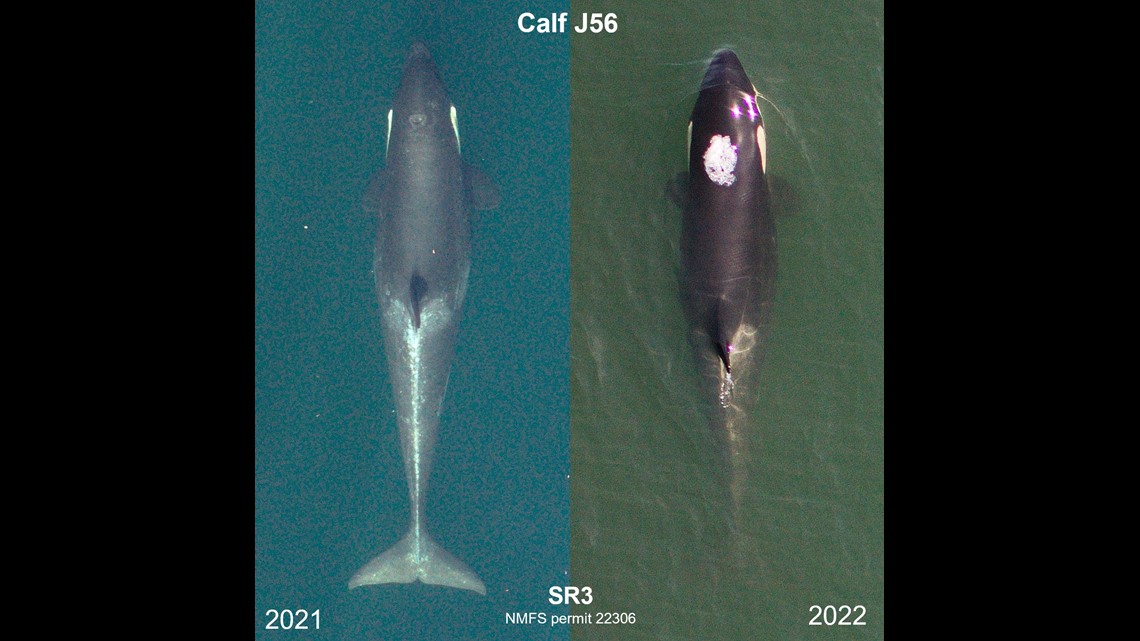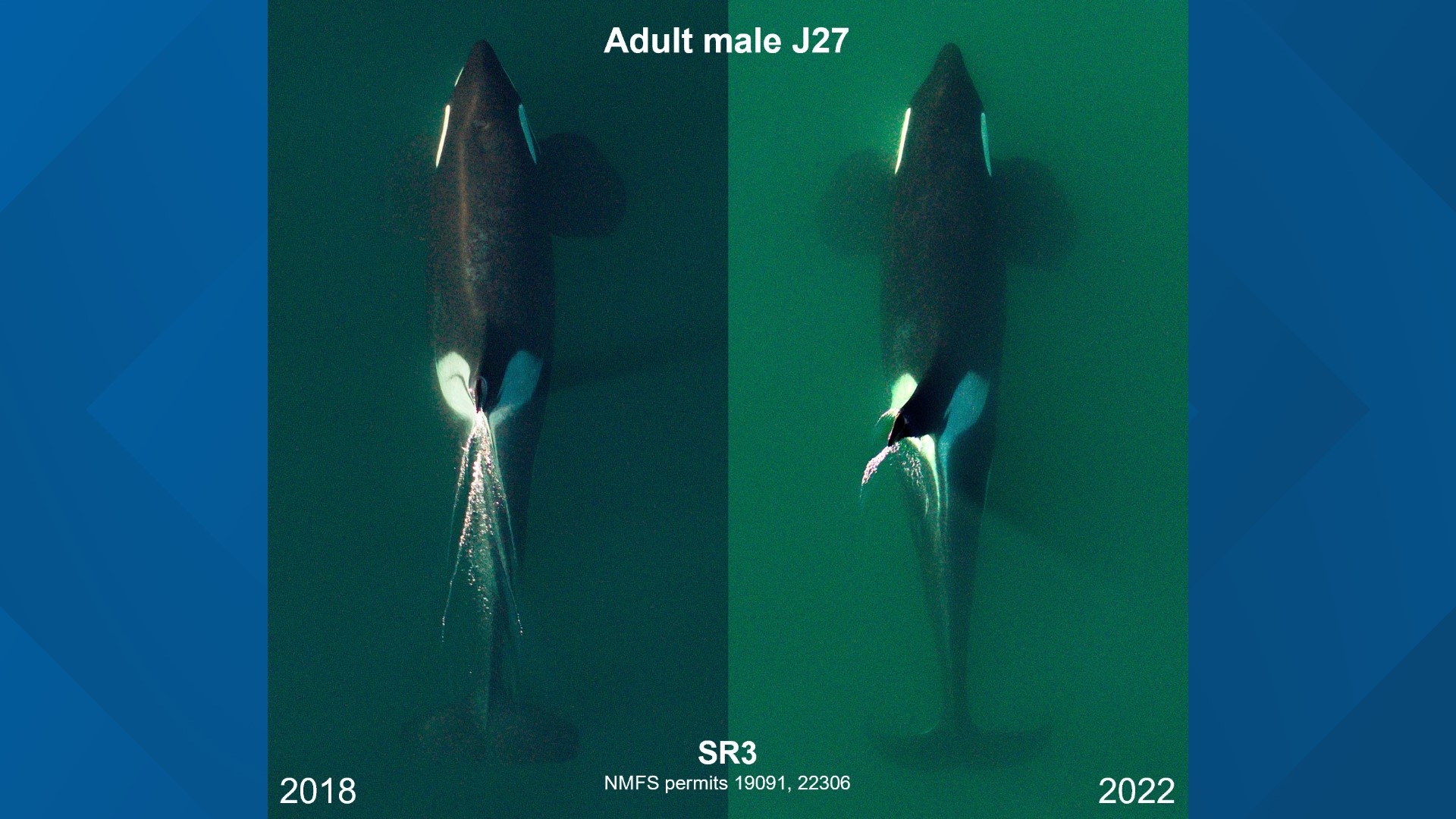OLYMPIA, Wash. — Editor's note: The above story about pregnancies in the Southern Resident killer whale J pod originally aired on Sept. 14, 2021.
Thirteen Southern Resident killer whales have been declared "vulnerable" by the Washington Department of Fish and Wildlife
The agency issued an emergency order requiring commercial whale-watching vessels to stay farther away from the endangered animals.
The order requires commercial whale-watching vessels to keep at least one-half nautical mile away from Southern Resident killer whales during the July-September whale-watching season, which is usually the only time of year vessels can come closer than a half nautical mile to the orca population.
“While we have reason to remain hopeful with the reports of recent pregnancies, the reality is that there are several Southern Residents that aren’t doing well and we’re very concerned about the population at large,” said WDFW Director Kelly Susewind.


Measurements taken by SR3 Sealife Response, Rehabilitation and Research between September 2021 and April 2022 show 12 J and L pod members are in poor condition based on measurements of the fatness behind the skull, which puts them at a two to three times higher risk of mortality, according to WDFW. One of those whales, L38, also appeared to be pregnant when measured in January.
SR3 also identified two young whales, J53 and L123, that were showing slower-than-expected growth. J53 is also showing lower-than-average body condition.
There have been several pregnancies reported in the Southern Resident orca population. Three K pod whales, K12, K20 and K27, were in the last nine to six months of pregnancy when they were measured in 2021. Video showing what appears to be a young whale with the K pod in May suggests at least one of those pregnancies was successful, according to WDFW.


Whale watching tours are still allowed to come closer to other, healthier whale populations like Bigg's killer whales, humpback whales, gray whales and any other species currently in the area.
All other boaters are urged to maintain a half-nautical mile distance from the Southern Resident killer whales. Washington law requires boaters stay at least 300 yards away from the orcas and at least 400 yards out of the path in front of and behind the whales. Vessels must reduce their speed to seven knots within a one-half nautical mile of Southern Residents, according to WDFW.
Vessel noise can cause female orcas in particular to stop foraging when boats are within 400 yards, according to research by the National Oceanic and Atmospheric Administration. This is especially concerning for pregnant and nursing orcas, who have to consume more food to support their calves.

